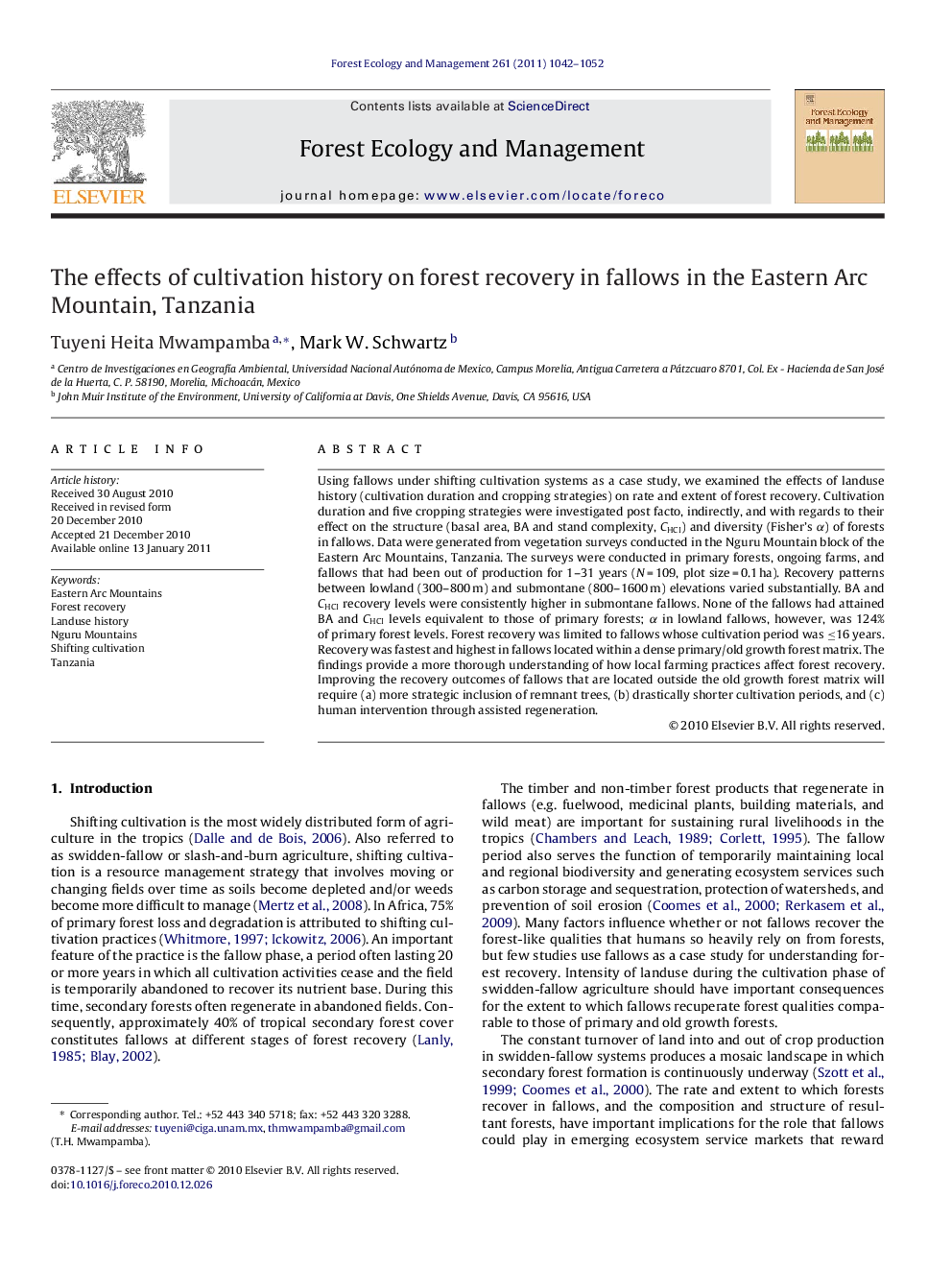| کد مقاله | کد نشریه | سال انتشار | مقاله انگلیسی | نسخه تمام متن |
|---|---|---|---|---|
| 88246 | 159292 | 2011 | 11 صفحه PDF | دانلود رایگان |

Using fallows under shifting cultivation systems as a case study, we examined the effects of landuse history (cultivation duration and cropping strategies) on rate and extent of forest recovery. Cultivation duration and five cropping strategies were investigated post facto, indirectly, and with regards to their effect on the structure (basal area, BA and stand complexity, CHCI) and diversity (Fisher's α) of forests in fallows. Data were generated from vegetation surveys conducted in the Nguru Mountain block of the Eastern Arc Mountains, Tanzania. The surveys were conducted in primary forests, ongoing farms, and fallows that had been out of production for 1–31 years (N = 109, plot size = 0.1 ha). Recovery patterns between lowland (300–800 m) and submontane (800–1600 m) elevations varied substantially. BA and CHCI recovery levels were consistently higher in submontane fallows. None of the fallows had attained BA and CHCI levels equivalent to those of primary forests; α in lowland fallows, however, was 124% of primary forest levels. Forest recovery was limited to fallows whose cultivation period was ≤16 years. Recovery was fastest and highest in fallows located within a dense primary/old growth forest matrix. The findings provide a more thorough understanding of how local farming practices affect forest recovery. Improving the recovery outcomes of fallows that are located outside the old growth forest matrix will require (a) more strategic inclusion of remnant trees, (b) drastically shorter cultivation periods, and (c) human intervention through assisted regeneration.
Research highlights▶ Location and cultivation history are important factors influencing forest recovery in fallows. ▶ Cultivation duration and farming practices can be used to examine how cultivation history affects recovery trajectories. ▶ Forest recovery is limited to fallows cultivated for ≤16 years. ▶ Location of fallows within old growth forest matrix drastically improves rate and extent of recovery. ▶ Incorporation of remnant trees in fields could improve recovery across all fallows.
Journal: Forest Ecology and Management - Volume 261, Issue 6, 15 March 2011, Pages 1042–1052